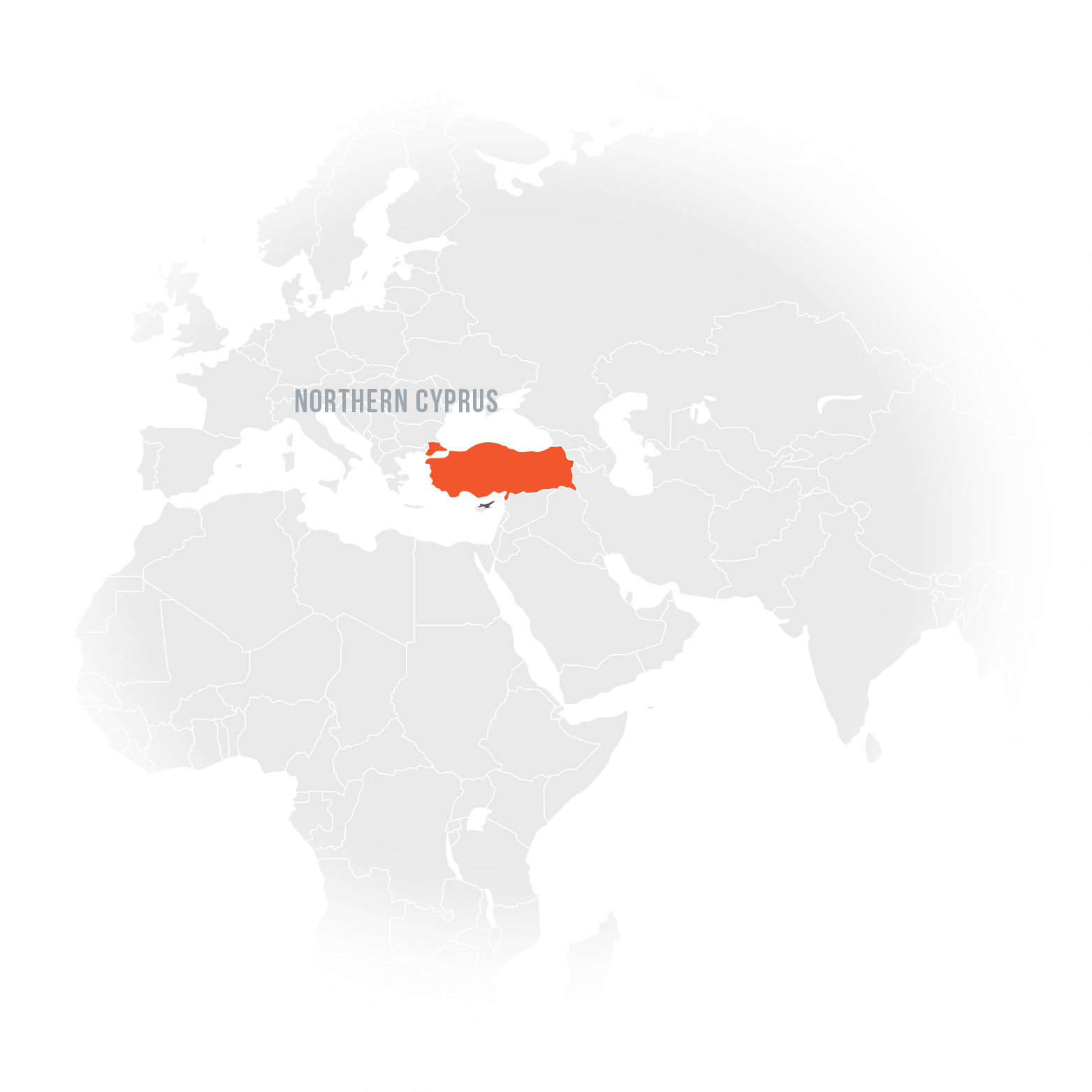northern cyprus

The Mediterranean island of Cyprus has historically been home to a majority Greek and minority Turkish population. In 1974, Turkish troops invaded the island and over the course of three weeks, took control of approximately 36.4 percent of the island’s territory, leading the vast majority of Turkish Cypriots in the south to flee north and any Greek Cypriots in the occupied northern area to flee south.[1] Seven months after the invasion, in February 1975, the Turkish administration unilaterally deemed the northern portion of the island a “Federated Turkish State,”[2] and eight years later it purported to recognize the independence of a Turkish Republic of Northern Cyprus (TRNC), which has not received international recognition.[3] De facto, the independence is nominal only, as Turkey is in effective control of North Cyprus territory and has definitive control of most of its affairs. Turkish military bases and a 20,000–40,000 strong Turkish Armed Forces presence, including tank brigades, air defenses, and immediate availability of air force intervention, reinforce this situation. Multiple rounds of United Nations-led negotiations have failed to bring about a resolution, and even the diplomatic process collapsed this year.[4]
Shortly after the invasion, the UN Security Council adopted a resolution “demand[ing] an immediate end to foreign military intervention in the Republic of Cyprus.”[5] The UN Security Council likewise asked all parties involved in the dispute to “refrain from any action which might prejudice [Cypriot] sovereignty, independence, territorial integrity and non-alignment, as well as from any attempt at partition of the island or its unification with any other country.”[6] The UN also declared the TRNC’s subsequent declaration of independence to be invalid, and called upon other states to similarly refrain from recognizing any Cypriot state other than the Republic of Cyprus.[7] Only Ankara has recognized the TRNC.[8] The European Court of Human Rights, in numerous cases, has found Turkish policy in Northern Cyprus violates the human rights of Greek Cypriots, particularly in matters of dispossession of property.[9]
Turkey has maintained a vigorous settlement enterprise in the occupied territory. Today, the majority of the territory’s population consists of settlers from the mainland. The flow continues, with the population growing by more than 10 percent a year recently, far more than the rate of natural increase. Many housing projects are being built to accommodate the new arrivals in the occupied territory. The settler population is accommodated by massive Turkish infrastructure investment in the area, such as an upgraded airport and direct water supply from the mainland. These projects rely heavily on the participation of foreign firms, whose technical expertise is indispensable. Turkey has also established many universities and tourist resorts that cater specifically to foreign nationals.
The Republic of Cyprus regards direct ties with the TRNC authorities, such as entry through their ports, as illegal.[10] Yet while Cyprus is a member of the European Union—and a state party of the International Criminal Court—many European firms do business with TRNC authorities, or with Turkish firms active in the TRNC. The Human Rights Council itself has released numerous reports on conditions in the north. In none of them has it identified economic activity by Turkish or third-country businesses as an issue even worth noting.[11]
[1] Kypros Chrysostimides, The Republic of Cyprus: A Study In International Law, 2000, p. 117; Frank Hoffmeister, Legal Aspects of the Cyprus Problem, 2006, pp. 36, 37; the Turkish invasion created an estimated 200,000 refugees. Michalis Stavrou Michael, Resolving the Cyprus Conflict: Negotiating History, 2009, p. 39.
[2] UN Security Council Resolution 367 (1975) ¶ 2, UN Doc. S/RES/367 (March 12, 1975).
[3] Declaration of Independence by Turkish Cypriot Parliament on 15 November 1983, appended to Letter from the Permanent Turkish Representative to the UN addressed to the Secretary-General, UN Doc A/38/586 (November 16, 1983).
[4] Helena Smith, “Once-in-a-Generation Hopes of Cyprus Reunification Appear to be Dashed,” Guardian, May 27, 2017,
[5] UN Security Council Resolution 353 (XXIX), UN Doc. S/RES/353 (1974) (July 20, 1974); see also UN Security Council Resolution 360 (XXIX), UN Doc. S/RES/360 (1974) (August 16, 1974) (recording “its formal disapproval of the unilateral military actions undertaken against the Republic of Cyprus”).
[6] UN Security Council Resolution 367 (1975) ¶ 1, UN Doc. S/RES/367 (March 12, 1975).
[7] UN Security Council Resolution 541 (1983), UN Doc. S/RES/541 (1983) (November 18, 1983); see also UN Security Council Resolution 550 (1984), UN Doc. S/RES/550 (1984) (May 11, 1984).
[8] See Parliamentary Assembly of the Council of Europe Resolution 816 (1984).
[9] See e.g. Loizidou v. Turkey, 310 Eur. Ct. H.R. para. 13–14, 57 (Dec. 18, 1996). http://hudoc.echr.coe.int/app/conversion/pdf/?library=ECHR&id=001-58007&filename=001-58007.pdf. See also Case of Cyprus v. Turkey, Application no. 25781/94, pars. 28, 522, 299 (Judgment) (2001). The Court did not consider the legality of the implantation of settlers, but did find their presence connected with a violation of property rights, intimidation and abuse of Greek Cypriots.
[10] Republic of Cyprus MFA, “Visa Policy, http://www.mfa.gov.cy/mfa/mfa2016.nsf/All/0E03E0EE9B9833EAC2258022003F023B?OpenDocument.
[11] See, e.g., Report of the Office of the United Nations High Commissioner for Human Rights, Question of Human Rights in Cyprus, A/HRC/31/21, February 1, 2016, https://documents-dds-ny.un.org/doc/UNDOC/GEN/G16/015/26/PDF/G1601526.pdf?OpenElement.